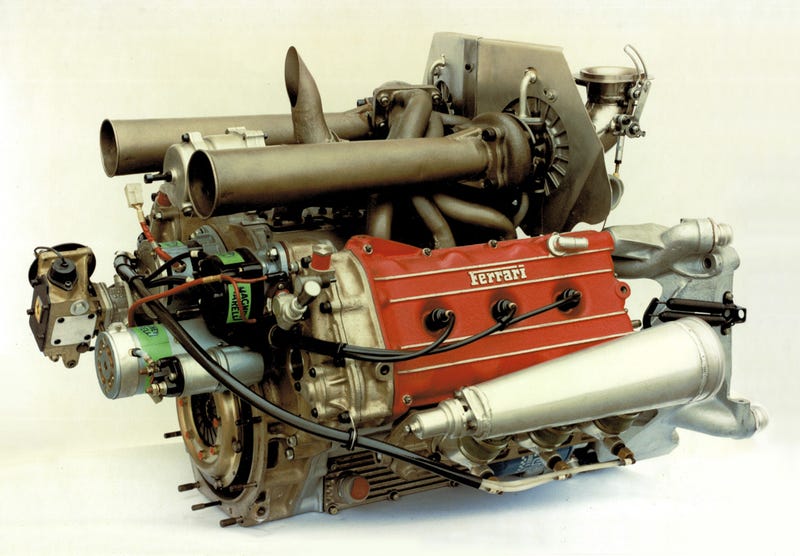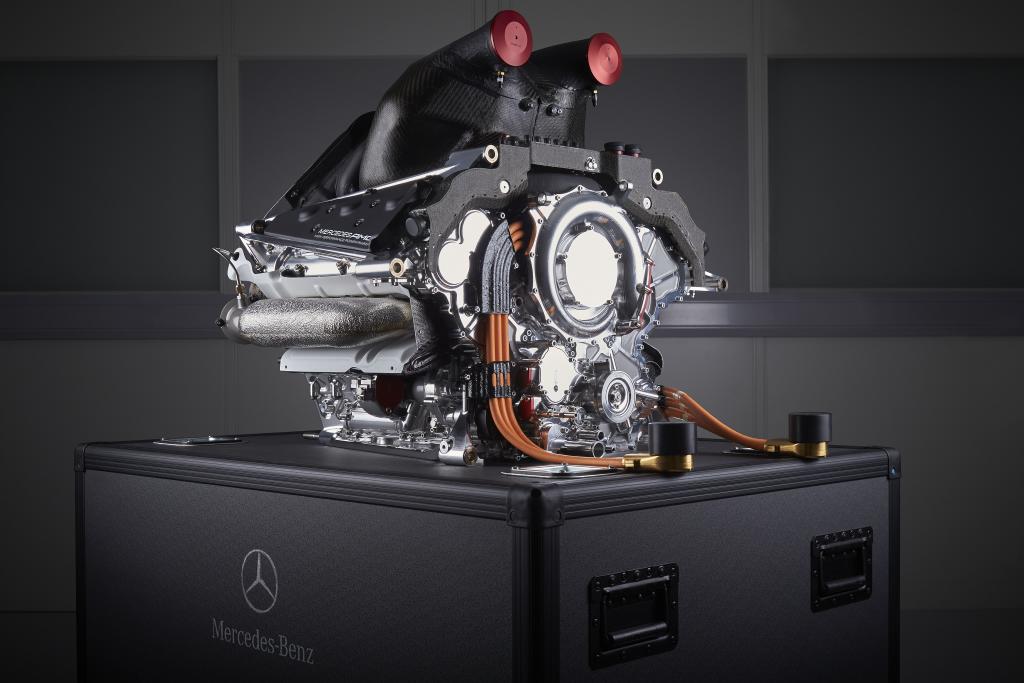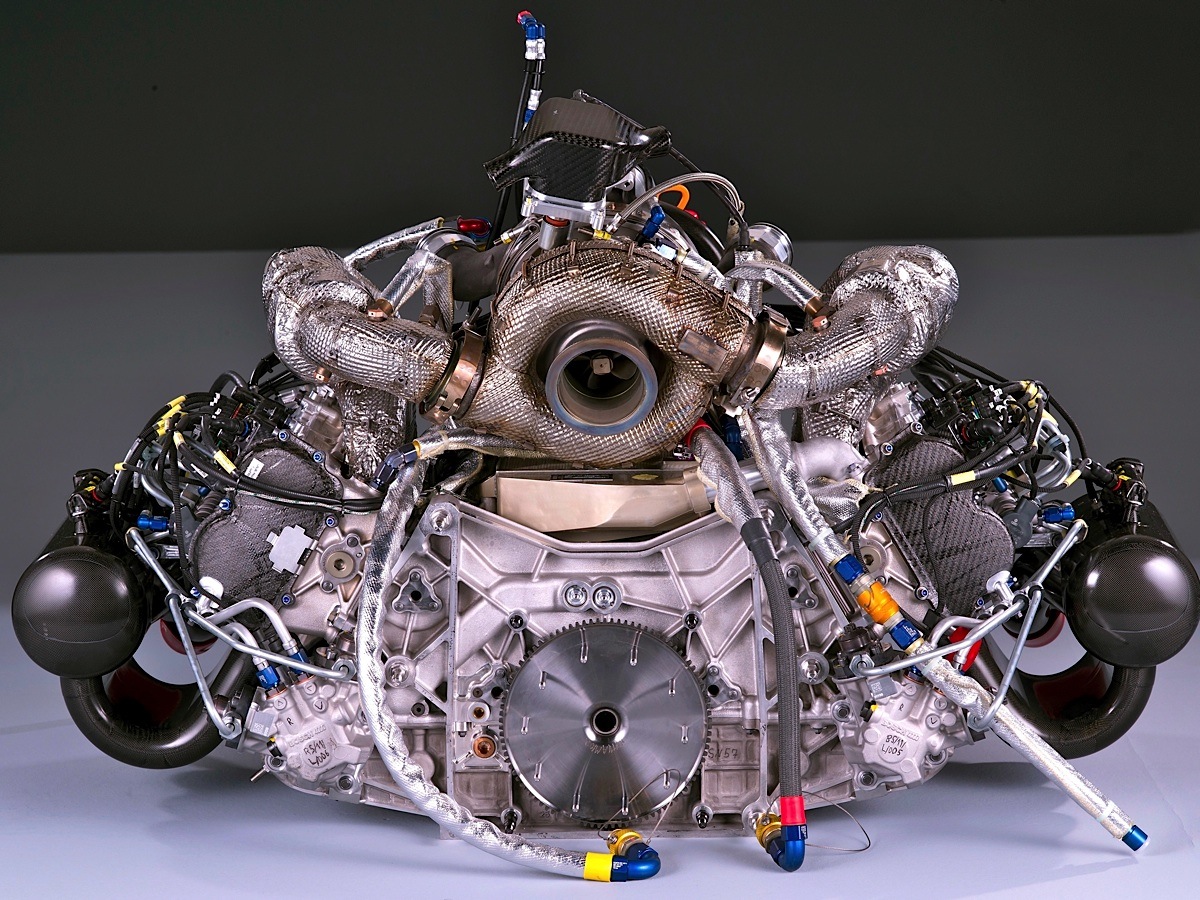Ferrari had a 120° V6 and a hot V in their early turbos 1982.
http://jalopnik.com/the-coolest-hot-vee ... 1632591852
- Login or Register
No account yet? Sign up
Because as I said previously some things were done to try and keep the engines generally interchangeable.bill shoe wrote:I'm not understanding something here. If it was naturally disadvantageous due to C.G. then why was there any need to ban it in the rules?Facts Only wrote:Point 1 (poor CoG) kills it stone dead on its own though. And I'm stuggling to think of any advantages .


The list of drawbacks cannot be this large since it's used by cars. Sure, the set of requirements for an F1 car is not the same but surely there's an overlap.Facts Only wrote:As mentioned Wuzak there are a massive list of flaws with a hot V and no real benefit, it was looked into breifly but was a complete non-starter. Everything gets looked at, considered and often schemed in CAD, the engineers arent just sitting around twiddling their thumbs waiting for someone on the internet to come up with ideas.
You're not thinking like an engineer though. There only has to be 1 more drawback than there is benefit and the idea is a no go. Or more realistically in F1 terms a 0.001 of second lap time increase and its not worth doing. If it doesn't improve laptimes then its a complete waste of resource.hurril wrote:The list of drawbacks cannot be this large since it's used by cars. Sure, the set of requirements for an F1 car is not the same but surely there's an overlap.Facts Only wrote:As mentioned Wuzak there are a massive list of flaws with a hot V and no real benefit, it was looked into breifly but was a complete non-starter. Everything gets looked at, considered and often schemed in CAD, the engineers arent just sitting around twiddling their thumbs waiting for someone on the internet to come up with ideas.
Thinking that the MGU-h will eliminate the lag is not entirely right though, is it? It doesn't come for free. Having shorter exhaust runners could probably make the exhaust energy recovery larger; the added benefit would be that the amount of lag to eliminate would be smaller. The entire exhaust system ought to be lighter as a whole too; if COG is all that mattered - then surely you could just add ballast at the bottom and Bob's your uncle. Clearly that is not the casegodlameroso wrote:Those cars don't have hybrid compounded turbos to essentially eliminate lag, plus there's less restraints on weight given an automobile weighs 3-4 times as much as an F1 car.


Packaging might be one, but since the V angle and whatnot is mandatet anyway, with these very engines, there is not much to gain.Facts Only wrote:[...]I've still not heard one benefit to having a Hot V on the current F1 engines, aside for some grumbling about "lag", [...].
You are correct in that most diesels don't have throttle blades and if they do they aren't for traditional throttle control as used in gasoline engines. However the basic design when it comes to balancing airflow across cylinder banks is just as crucial in a diesel. Having a hot V and no throttle blades that can be adjusted individually by the ECU to correct any inequalities means that the intake piping and plenums will have to be very carefully designed to ensure equal airflow to each cylinder bank.Facts Only wrote:
Secondly being a Diesel means that (I believe) there are no throttle bodies on the cylinder heads so you eliminate to prblem of balancing the throttles accross the outside of the two heads.
One big disadvantage though is that it is very wide. This would pose a problem in a Formula1 car which tends to require a very narrow body for air flow on the outside and through the chassis.Facts Only wrote:Well there you go, that proves its a better idea! Or perhaps it just shows that if you're designing a completely different engine for a completely different car in a completely different series you may end up with something... well.. different.
Its such a different animal that 5 seconds looking at that picture gives you plenty of info on why many of the Hot V disadvantage aren't present on that engine.
Firstly it has a very wide V angle, meaning that the engine mass is natuarally lower and that even with the exahusts on top the CoG penalty is massively reduced. Also it is/was being put into a car with a much higher min' weight limit so there will no doubt be plenty of ballast on the floor to offset any CoG penalty.
Secondly being a Diesel means that (I believe) there are no throttle bodies on the cylinder heads so you eliminate to prblem of balancing the throttles accross the outside of the two heads.
Thirdly that engine doesnt have turbo compounding so there is less weight and heat sensitive components to be placed in the V and also reducing "lag" or response times by minimising exhaust runs is a tangible benefit.
I've still not heard one benefit to having a Hot V on the current F1 engines, aside for some grumbling about "lag", which because we arent in 1984 isn't exactly a problem anyway.